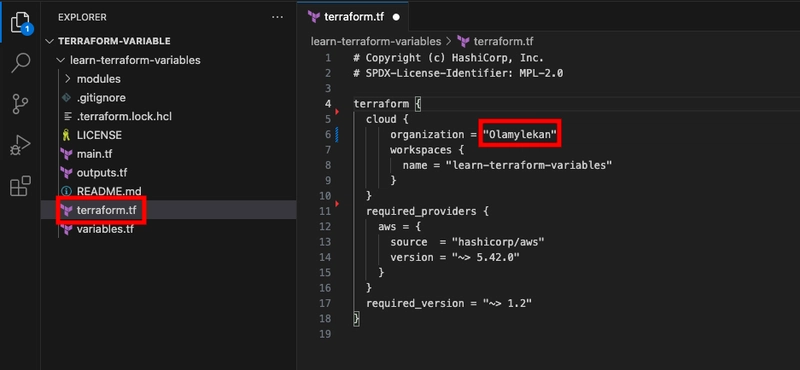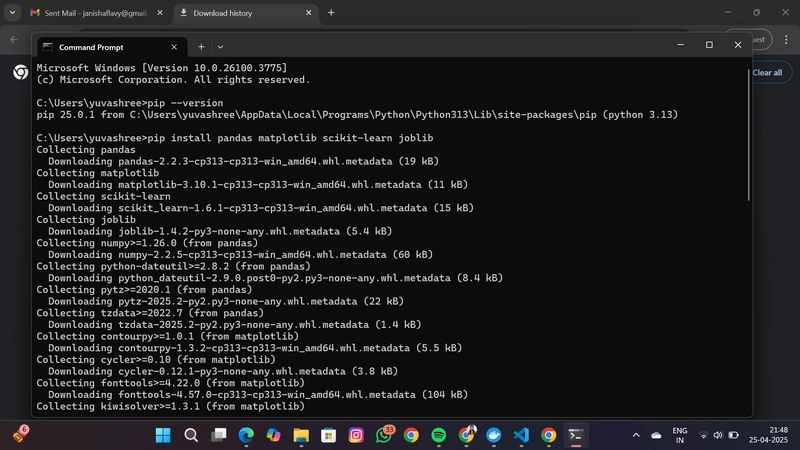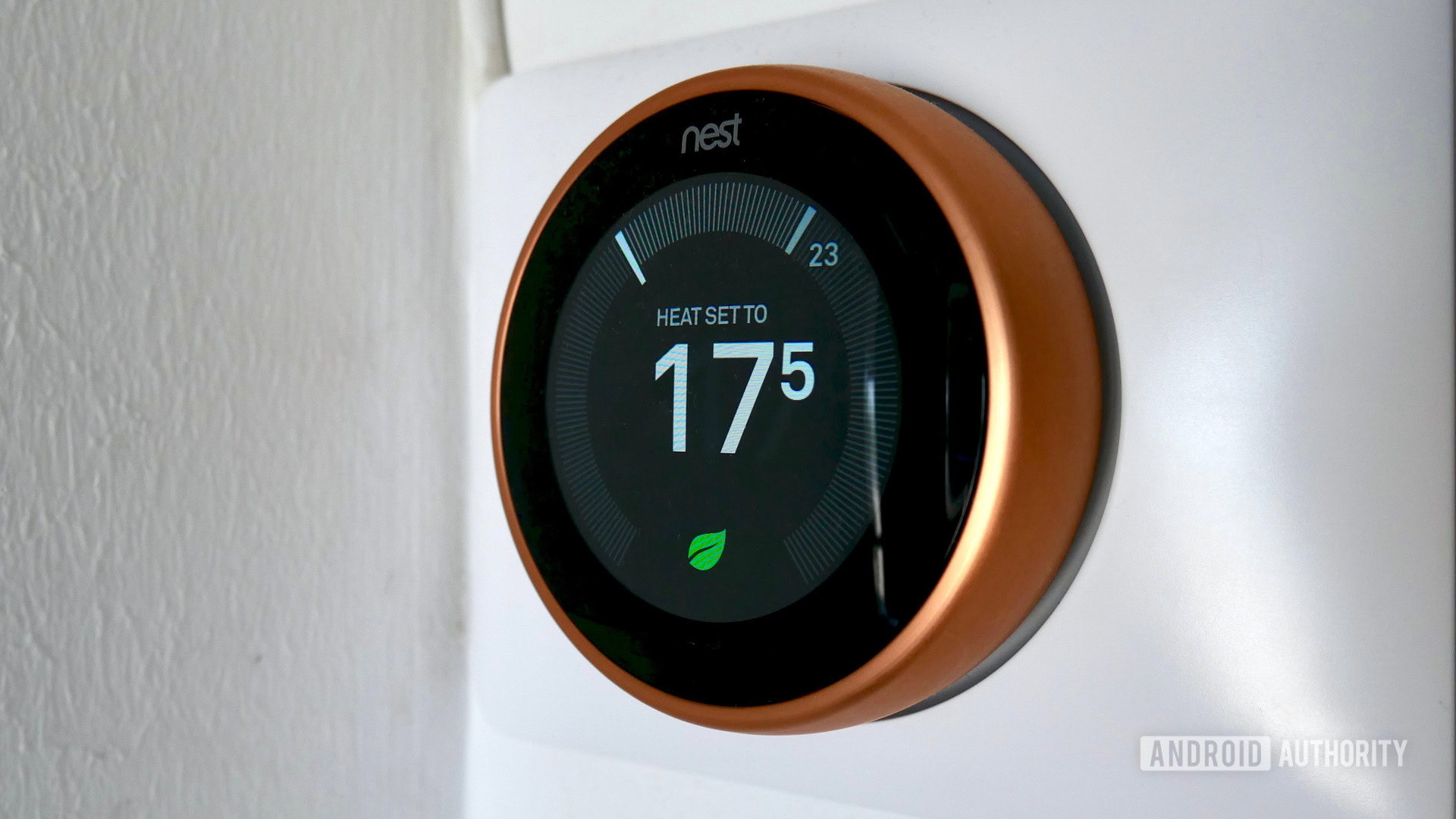Essential Guide to Recognizing Emergency Alarm Circuit Performance and Layout
Emergency Alarm Circuit They additionally have insulation and jackets that restrict flame propagation plus the generation of damaging smoke. Such wires are regularly employed above put on hold ceilings or listed below floors horizontally, primarily where there is serious concern for environmental security in addition to the danger of fires. When there is no burner, the thermistor continues to be at 10k ohm. The circuit utilizes the NTC thermistor whose resistance lowers whenever the temperature increases. When it comes to a fire, the temperature level rises which decreases the resistance of a thermistor. This boosts the output of a voltage divider that is connected to the non-inverting terminal of the op-amp. Therefore, the output of the op-amp becomes high and turns the buzzer ON. Comprehending Fire Alarm Circuits Emergency alarm circuits play a crucial role in ensuring safety and security in household and industrial structures by identifying smoke, warmth, and fires. Recognizing how these circuits operate is crucial for effective fire prevention and action. This summary will delve into the elements and functions of smoke alarm circuits, highlighting their relevance in securing lives and residential property. By comprehending the essential concepts behind these systems, customers can much better value their design and operation, resulting in even more educated choices relating to fire safety measures. Meaning and Function Fire alarm circuits are necessary components of fire discovery and alarm systems, developed to check and respond to the visibility of smoke, warm, or fire. These circuits serve to launch a caution signal to alert residents and emergency solutions, inevitably making certain safety and minimizing damages in case of a fire. The decrease in the present circulation is used to set off the sounder and alarm circuit. Smoke alarm systems are wired in commercial manufacturing facilities, workplaces, public structures and nowadays also in homes. The major purpose of an emergency alarm system is to safeguard the riches, health and wellness and life of specific or culture. When there is no smoke the light from the bulb will certainly be directly dropping on the LDR. The LDR resistance will certainly be reduced and so the voltage across it (listed below 0.6 V). Find every electronic devices circuit layout here, Categorized Digital Circuits and Electronic Tasks with well discussed procedure and exactly how to make it procedure and after that New Circuits everyday, Enjoy and Discover electronics. The circuits release websites ecological variables and arise from real life screening may require adjustments. To secure the thermistor from injury from extreme warm, it can be mounted atop a compound that stands up to warmth, such as mica. The main objective of fire alarm circuits is to supply very early discovery of possible fire threats. They utilize different sensing units such as smoke alarm, warm detectors, and manual pull stations to discover unsafe conditions. When any of these gadgets cause an alarm system, the fire alarm circuit triggers, prompting distinct alarms, visual indications, and interaction with emergency situation reaction teams. Smoke alarm circuits can be classified right into two primary types: conventional and addressable. Conventional circuits split the building right into areas, where the alarm systems from each area are kept track of jointly. This approach assists identify the area of a possible fire. Addressable circuits, on the other hand, designate distinct addresses per device, permitting precise identification of the alarm resource and boosting the system's general action time and efficiency. In summary, comprehending emergency alarm circuits is essential for both safety professionals and constructing occupants. These systems not only safeguard residential or commercial property and lives however additionally facilitate timely reactions to emergency situations, making them a crucial aspect of modern-day building safety criteria. Components of Smoke Alarm Circuits Smoke alarm circuits are crucial systems developed to identify and alert residents in case of a fire. Understanding these circuits entails identifying the components that collaborate to make sure security and timely action during emergencies. Emergency alarm systems normally consist of detectors, control panels, alarms, and alert devices, each carrying out a particular feature within the general system. The primary element of emergency alarm circuits is the fire detector, which can either be ionization, photoelectric, or a mix of both. Ionization detectors respond swiftly to flaming fires, while photoelectric detectors are extra conscious smoldering fires. These detectors keep an eye on the setting for smoke, warmth, or gas emissions and send signals to the control panel when a potential fire is detected. The control board works as the mind of the emergency alarm system. It gets input from t

Emergency Alarm Circuit
They additionally have insulation and jackets that restrict flame propagation plus the generation of damaging smoke. Such wires are regularly employed above put on hold ceilings or listed below floors horizontally, primarily where there is serious concern for environmental security in addition to the danger of fires. When there is no burner, the thermistor continues to be at 10k ohm.
The circuit utilizes the NTC thermistor whose resistance lowers whenever the temperature increases. When it comes to a fire, the temperature level rises which decreases the resistance of a thermistor. This boosts the output of a voltage divider that is connected to the non-inverting terminal of the op-amp. Therefore, the output of the op-amp becomes high and turns the buzzer ON.
Comprehending Fire Alarm Circuits
Emergency alarm circuits play a crucial role in ensuring safety and security in household and industrial structures by identifying smoke, warmth, and fires. Recognizing how these circuits operate is crucial for effective fire prevention and action. This summary will delve into the elements and functions of smoke alarm circuits, highlighting their relevance in securing lives and residential property. By comprehending the essential concepts behind these systems, customers can much better value their design and operation, resulting in even more educated choices relating to fire safety measures.
Meaning and Function
Fire alarm circuits are necessary components of fire discovery and alarm systems, developed to check and respond to the visibility of smoke, warm, or fire. These circuits serve to launch a caution signal to alert residents and emergency solutions, inevitably making certain safety and minimizing damages in case of a fire.
The decrease in the present circulation is used to set off the sounder and alarm circuit. Smoke alarm systems are wired in commercial manufacturing facilities, workplaces, public structures and nowadays also in homes. The major purpose of an emergency alarm system is to safeguard the riches, health and wellness and life of specific or culture. When there is no smoke the light from the bulb will certainly be directly dropping on the LDR. The LDR resistance will certainly be reduced and so the voltage across it (listed below 0.6 V).
Find every electronic devices circuit layout here, Categorized Digital Circuits and Electronic Tasks with well discussed procedure and exactly how to make it procedure and after that New Circuits everyday, Enjoy and Discover electronics. The circuits release websites ecological variables and arise from real life screening may require adjustments. To secure the thermistor from injury from extreme warm, it can be mounted atop a compound that stands up to warmth, such as mica.
The main objective of fire alarm circuits is to supply very early discovery of possible fire threats. They utilize different sensing units such as smoke alarm, warm detectors, and manual pull stations to discover unsafe conditions. When any of these gadgets cause an alarm system, the fire alarm circuit triggers, prompting distinct alarms, visual indications, and interaction with emergency situation reaction teams.
Smoke alarm circuits can be classified right into two primary types: conventional and addressable. Conventional circuits split the building right into areas, where the alarm systems from each area are kept track of jointly. This approach assists identify the area of a possible fire. Addressable circuits, on the other hand, designate distinct addresses per device, permitting precise identification of the alarm resource and boosting the system's general action time and efficiency.
In summary, comprehending emergency alarm circuits is essential for both safety professionals and constructing occupants. These systems not only safeguard residential or commercial property and lives however additionally facilitate timely reactions to emergency situations, making them a crucial aspect of modern-day building safety criteria.
Components of Smoke Alarm Circuits
Smoke alarm circuits are crucial systems developed to identify and alert residents in case of a fire. Understanding these circuits entails identifying the components that collaborate to make sure security and timely action during emergencies. Emergency alarm systems normally consist of detectors, control panels, alarms, and alert devices, each carrying out a particular feature within the general system.
The primary element of emergency alarm circuits is the fire detector, which can either be ionization, photoelectric, or a mix of both. Ionization detectors respond swiftly to flaming fires, while photoelectric detectors are extra conscious smoldering fires. These detectors keep an eye on the setting for smoke, warmth, or gas emissions and send signals to the control panel when a potential fire is detected.
The control board works as the mind of the emergency alarm system. It gets input from the detectors, procedures this information, and establishes if an alarm system needs to be caused. The control board is also in charge of handling various other system parts, including interface with tracking solutions that can notify emergency responders if needed.
When an alarm is caused, notice gadgets such as horns, bells, and strobe lights turn on to inform owners to leave the premises. In advanced systems, voice evacuation systems supply specific guidelines on exactly how to exit the structure safely.
Additionally, smoke alarm circuits might consist of manual pull terminals that enable individuals to start an alarm system if they observe a fire before automated detection takes place. These stations are tactically placed throughout a building to ensure they are quickly obtainable.
In summary, understanding smoke alarm circuits includes a thorough look at the numerous elements that contribute to effective fire detection and feedback. Each part of the system plays a crucial role in maintaining security and guaranteeing a quick reaction in the event of a fire.
Kinds Of Emergency Alarm Circuits
Recognizing emergency alarm circuits is essential for making sure the safety and security of buildings and their residents. Fire alarm systems are made to discover and notify people of possible fire risks. These systems comprise numerous components, consisting of detectors, alarm systems, control panels, and notice tools, all connected through certain kinds of circuits that assist in interaction and functionality.
There are largely 2 sorts of smoke alarm circuits: traditional circuits and addressable circuits. Conventional circuits are simpler in layout and split a structure into zones. Each area is connected to a control board, which can spot signals from fire detectors within that location. This type of system gives localized info about the resource of an alarm system yet does not recognize the precise area of the detector that triggered it.
On the other hand, addressable circuits provide an advanced approach. In this system, each tool has its own one-of-a-kind address, enabling the control board to identify the exact detector or tool that triggered the alarm This supplies quicker, extra precise information concerning the fire's location, which can dramatically boost feedback time and safety throughout emergencies.
Furthermore, circuits can likewise be classified based upon their feature, including launching circuits, which connect detectors to the control board, and notification circuits, which link the control panel to alarm system signals and alert devices like bells and strobes. Comprehending these circuit kinds is crucial for creating, mounting, and maintaining reliable fire alarm systems that adhere to safety and security guidelines and offer ideal security in the event of a fire.
Elements of Smoke Alarm Circuit
Smoke alarm circuits are necessary elements of contemporary safety and security systems, created to identify and alert residents of prospective fire dangers. Comprehending the basic parts of these circuits is essential for reliable fire protection. Crucial element consist of smoke alarm, warm detectors, alarm signals, control board, and power products, each working synergistically to make certain quick response in case of a fire. This article discovers these parts carefully, highlighting their features and value in maintaining safety in property and commercial structures.
Control Panel
A smoke alarm circuit is a crucial part of any type of fire discovery and avoidance system. At the heart of this circuit is the control panel, which serves as the brain of the system, working with the signals from different elements and making certain an effective action to any type of fire or emergency circumstance.
The control board obtains input from numerous discovery tools such as smoke alarm, warmth detectors, and hands-on pull terminals. These tools constantly keep an eye on for signs of fire and send out a signal to the control panel when they find smoke, warm, or when somebody by hand activates the alarm system. The control panel refines these signals and establishes if an alarm system needs to be activated.
As soon as a fire is identified, the control board turns on the security system, which might consist of appearing alarm systems, flashing lights, and sending out notifications to emergency services or assigned employees. The panel is likewise in charge of monitoring the condition of all attached gadgets, giving details about their functional state and signaling to any type of faults or issues.
Furthermore, the control panel may consist of attributes such as programmable feedback strategies, enabling customized alarms based on certain problems or areas within a structure. This makes the system versatile to various settings, improving its efficiency in identifying and reacting to fire threats.
Normal maintenance and testing of the emergency alarm circuit and control board are important to ensure ideal efficiency and reliability in instance of an emergency situation. This consists of monitoring battery back-ups, verifying connectivity with all components, and making certain that the control panel can effectively connect with the alarm. system and emergency services.
Fire Sensors
Fire alarm circuits are necessary parts of fire security systems, made to discover and inform the existence of smoke or fire. They contain various aspects that work together to make certain timely warnings and effective action in case of emergency situations. Recognizing the parts of a smoke alarm circuit is crucial for making and maintaining an efficient fire discovery system.
Fire Sensors: Devices that spot smoke, heat, or flames. Typical kinds include ionization smoke alarm, photoelectric smoke detectors, and warm detectors.
Control board: The brain of the fire alarm system that receives signals from sensors, refines them, and turns on alarms or notification devices when a fire is found.
Notice Devices: Alarm systems, strobes, and horns that inform owners of a building concerning a fire. These devices can be audible or noticeable.
Power Supply: The electrical resource that powers the whole fire alarm system. Backup batteries are frequently consisted of to make sure functionality during power failings.
Manual Pull Stations: Devices that permit individuals to by hand trigger the emergency alarm system in the event of a fire.
Smoke and Warm Detectors: Unique sensors made to specifically identify smoke particles or increasing temperatures in a provided area.
Circuitry and Interconnections: Cabling that connects all components of the fire alarm system, facilitating communication between sensors, the control board, and notification gadgets.
Each of these elements plays a crucial role in making certain the efficiency of fire detection and sharp systems in various atmospheres, highlighting the requirement for normal maintenance and updates to the fire alarm infrastructure.
Alarm system Tools
An emergency alarm circuit is a crucial element of any fire safety and security system, created to find smoke, heat, or fires and sharp owners in instance of a fire. Recognizing the numerous elements of the smoke alarm circuit and the kinds of alarm tools involved is important for making sure reliable fire security. These systems usually consist of starting gadgets, control board, notice home appliances, and power products.
Starting gadgets, such as smoke alarm, heat detectors, and hand-operated pull stations, are in charge of spotting the existence of a fire or suggesting an emergency by hand. Smoke detectors pick up smoke particles, while warmth detectors trigger based upon considerable temperature level boosts. Manual pull stations enable individuals to set off the alarm straight in instance of an emergency, providing an essential layer of redundancy in the fire detection procedure.
The control board functions as the brain of the emergency alarm system, obtaining signals from the initiating devices and processing that details. It identifies the proper response, such as appearing alarms and activating alarm system alert circuits. Modern control board typically include innovative functions such as digital display screens, remote tracking capacities, and the capacity to interact with various other structure systems.
Alarm system devices, or notice devices, are crucial for informing occupants to a fire. see this here can include distinct alarms, such as horns and bells, in addition to visual alarms, such as blinking lights or strobe lights. Some modern-day systems utilize voice emptying messages to offer clear directions throughout an emergency, improving the effectiveness of the alert.
Lastly, an effective power supply is critical for the procedure of the fire alarm circuit. Commonly, smoke alarm systems use secondary source of power, such as batteries or generators, to make certain capability throughout power outages. Proper maintenance and screening of all parts add to the total dependability of the smoke alarm system, making sure that it executes effectively when needed the most.
Power Supply
An emergency alarm circuit is a vital element of fire safety systems, developed to discover smoke, heat, and flames and alert residents of possible threat. One necessary element of this system is the power supply, which makes certain that the entire circuit runs dependably and effectively in any kind of circumstance.
The power supply in a smoke alarm circuit offers to convert electrical energy from a key resource right into a stable voltage ideal for powering the various parts of the system. This can include batteries, transformers, or committed power products. The reliability of the power supply is vital, as it needs to keep constant operation also during power blackouts or emergencies.
Generally, smoke alarm systems include both primary and backup power materials to guarantee constant procedure. Main power is normally derived from the electrical grid, while backup power is supplied by rechargeable batteries. In the event of a power failing, the battery backup takes control of, permitting the system to function without interruption.
Additionally, the power supply is in charge of dispersing the necessary voltage to various components of the smoke alarm circuit, consisting of detectors, control panels, and alarm tools. Appropriate policy and filtering of the power supply are important to stop voltage changes that can create malfunctions or duds.
In summary, the power supply in a fire alarm circuit plays an important role in preserving system dependability and performance. It guarantees that the system remains operational throughout emergency situations, enabling swift detection and response to potential fire dangers.
Kinds Of Fire Sensors
Fire sensors play a critical role in the effectiveness of emergency alarm circuits, acting as the first line of protection against prospective fire threats. These gadgets discover the visibility of smoke, warmth, or flames, permitting timely notifies to residents and emergency situation solutions. Recognizing the different types of fire sensors-- such as ionization, photoelectric, dual-sensor, and warmth detectors-- can considerably improve fire precaution and make certain more reputable monitoring in residential and business setups.
Smoke Detectors
Fire sensors and smoke alarm are critical parts of fire alarm circuits, made to discover indicators of fire and alert occupants. Different kinds of sensing units offer numerous functions, improving the efficiency of fire detection systems. Below are the main types of fire sensors and smoke alarm typically utilized in both residential and commercial settings.
Ionic Smoke Detectors: These detectors use a percentage of contaminated material to ionize air, permitting present to stream in between two metal plates. When smoke goes into the chamber, it interferes with the flow, activating an alarm system.
Photoelectric Smoke Detectors: Using a source of light and a photoelectric sensor, these detectors reply to smoke bits by scattering light. When adequate smoke is present, the light is redirected, turning on the alarm.
Warm Detectors: These sensing units react to a modification in temperature or the visibility of warm. They can be rate-of-rise detectors that respond to quick temperature level rises or fixed-temperature detectors that set off alarm systems at certain temperatures.
Multi-Sensor Detectors: Integrating the capabilities of both smoke and warmth detectors, these devices can give even more accurate fire discovery and reduce the chances of false alarms.
Optical Smoke Detectors: A sort of photoelectric detector, these tools make use of light scattering to discover smoke. They are extremely effective in discovering smoldering fires that generate larger smoke bits.
Understanding the various types of fire sensors and smoke alarm is necessary for choosing the appropriate system for certain settings, making certain ideal security and conformity with fire laws.
Warm Detectors
Fire sensors and warmth detectors are important parts of fire alarm systems, providing important defense versus fire hazards. These gadgets can be classified based upon their procedure concepts and discovery approaches. Understanding their kinds is essential for reliable fire safety and security preparation.
There are 2 key types of warm detectors: dealt with temperature detectors and rate-of-rise detectors. Taken care of temperature level detectors trigger when the ambient temperature gets to a pre-defined limit. They are excellent for atmospheres where abrupt temperature level modifications are not expected. On the other hand, rate-of-rise detectors react to rapid rises in temperature, making them suitable for areas where fires can create swiftly.
Another essential classification consists of mix warm detectors, which utilize both dealt with and rate-of-rise technology. This double functionality permits faster discovery in diverse scenarios, boosting overall safety. Each sort of heat detector has its distinct applications, making it vital to select the suitable one based on the particular environment and fire threats.
Various other sorts of fire sensors include smoke detectors, which rely on the presence of smoke fragments to trigger an alarm, and fire detectors, which are highly conscious infrared radiation or ultraviolet light emitted by fires. Integrating different fire sensors and warmth detectors right into an extensive emergency alarm circuit enhances discovery abilities and boosts feedback times throughout emergencies.
Regular upkeep and screening of these systems are necessary to ensure their reliability and efficiency, hence protecting lives and property from fire-related catastrophes.
Mix Detectors
Fire sensing units are important components of smoke alarm systems, created to discover the existence of fire or smoke and alert passengers to prospective risks. These sensors are available in numerous types, each utilizing different innovations to pick up fire or smoke effectively. One of the most common types of fire sensors consist of ionization smoke alarm, photoelectric smoke detectors, and warmth detectors. Ionization detectors are sensitive to fast-flaming fires, while photoelectric detectors are extra efficient in discovering smoldering fires. Warm detectors, on the other hand, respond to changes in temperature level, making them optimal for areas where smoke detector may create false alarms.
Mix detectors are advanced tools that incorporate multiple noticing technologies into one unit, boosting fire discovery capabilities. These detectors typically combine the features of ionization and photoelectric sensing units, enabling them to spot both fast- and slow-burning fires. By combining these innovations, combination detectors significantly reduce the likelihood of duds while enhancing general reaction time to an actual fire. Additionally, many combination systems can also incorporate warmth discovery attributes, giving comprehensive tracking to guarantee safety in numerous settings. Using combination detectors is particularly beneficial in domestic and commercial settings, where diverse fire threats are present.
Wiring and Configuration
Circuitry and setup play a crucial function in the efficient procedure of emergency alarm circuits, making sure trustworthy discovery and alert in the event of a fire. Appropriate setup and arrangement not only enhance the efficiency of the system however additionally contribute to the overall safety of a building's residents. Comprehending the concepts behind circuitry techniques, electrical codes, and configuration settings is vital for experts entrusted with carrying out these life-saving systems. This write-up will certainly discover the essential elements of fire alarm circuit electrical wiring and setup to assist guarantee optimal safety and security and capability.
Electrical wiring Kinds
Electrical wiring and arrangement are vital components in the style and application of fire alarm circuits. Correct electrical wiring ensures that the system operates efficiently, offering timely signals in case of a fire. The choice of circuitry kind can influence the dependability and performance of the smoke alarm system, making it important to understand the various choices offered.
There are usually two major types of circuitry used in emergency alarm circuits: Course A and Course B setups. Course A wiring supplies a looped connection, enabling current to travel in 2 directions. This redundancy implies that if one part of the circuit is harmed or falls short, the system can still work using the alternative course. This makes Course An electrical wiring specifically suitable for larger buildings or areas where dependability is extremely important.
On the other hand, Class B circuitry consists of a straightforward two-wire connection that runs from the control panel to the devices in a non-looped arrangement. This sort of circuitry is less complicated and more economical to mount, yet it does not use the very same level of dependability as Course A. If a break occurs in the circuit, all devices past the break will certainly stay inactive, which can be dangerous in an emergency situation.
In addition to Class A and Class B circuitry, there are likewise different qualities of cable made use of, such as stuck and strong cord. Stuck cord is more flexible and simpler to work with, making it a preferred selection for installations that require bending and shaping around edges. Solid cable, while much less adaptable, can supply much better conductivity and is usually utilized for longer runs or in situations where added mechanical toughness is required.
Overall, the choice of electrical wiring types and arrangements is crucial for ensuring the efficient operation of fire alarm circuits. Elements such as building size, the potential for damage, and budget plan considerations all play a role in figuring out the most suitable wiring option for a provided application.
Loop Setup
Electrical wiring and setup are crucial components in establishing a trustworthy smoke alarm circuit. Proper loop setup can significantly enhance the system's performance, ensuring fast detection and response to prospective fire dangers. It is vital to recognize the layout and connection of various elements within the circuit to preserve the honesty and efficiency of the smoke alarm system.
Usage ideal gauge wiring to stop voltage decrease and make sure current circulation is sufficient.
Plan the loop setup to decrease the threat of single points of failure.
Include discontinuation points for link to the major control panel.
Consider using monitored circuits to boost mistake detection abilities.
Apply a zone-based strategy to simplify troubleshooting and maintenance jobs.
Make certain all connections are safe to avoid periodic faults.
Document the circuitry format for future recommendation and system upgrades.
Addressable vs. Traditional Equipments
When designing emergency alarm systems, recognizing the differences between addressable and traditional systems is critical. Conventional fire alarm systems utilize a less complex electrical wiring configuration, where multiple gadgets are linked in a parallel arrangement on the same circuit. This indicates that a solitary circuit can include a number of detectors and alert appliances, and if one tool is activated, the whole circuit indicates an alarm. Nonetheless, the disadvantage is that it ends up being challenging to identify the precise location of the triggered tool without extra examination because the system just recognizes the circuit, not the certain system.
On the other hand, addressable fire alarm systems offer an advanced service. Each tool in an addressable system has a special identifier, allowing the control board to identify exactly which gadget has actually been triggered. This is attained with a loophole electrical wiring configuration, where gadgets are connected in a series and continuously communicate with the control panel. Consequently, when an alarm is triggered, the system can suggest the particular location of the gadget that activated the alarm, dramatically enhancing action times and promoting simpler maintenance.
In regards to wiring, conventional systems normally call for more circuits for considerable installments, causing increased intricacy and possibly higher costs. Addressable systems, although at first extra pricey, can minimize setup complexity and labor costs because of their lowered wiring needs and simplicity of troubleshooting. Inevitably, the choice in between addressable and traditional systems hinges on the certain requirements of the environment they are shielding, consisting of building dimension, tenancy kind, and spending plan factors to consider.
Operating Concepts
Operating principles in a smoke alarm circuit are important for ensuring the safety and integrity of fire discovery and sharp systems. These concepts encompass the systems where fire alarms find smoke, warm, or flames, and the subsequent actions taken to alert passengers and emergency services. Comprehending these principles is critical for developing, mounting, and keeping reliable emergency alarm systems that secure life and property from the destructive impacts of fire.
Activation Mechanism
Running principles of an emergency alarm circuit include the detection of smoke, heat, or fires and triggering a sharp when these elements exist. The circuit generally makes up numerous components such as sensors, alarms, and a control panel that work together to guarantee fast feedback to possible fire situations. Sensors detect modifications in the atmosphere, such as temperature level boosts or smoke bits, and send signals to the control board.
The activation mechanism of an emergency alarm circuit is based on the particular kind of sensing unit used. For instance, ionization smoke detectors respond swiftly to flaming fires, while photoelectric sensors are extra conscious smoldering fires. Upon detection of a fire threat, the control board turns on the alarm system, which might consist of distinct alarm systems, visual signs, or perhaps notifications to emergency solutions. This timely feedback is critical in making certain safety and lessening property damage.
Overall, the assimilation of different parts in a smoke alarm circuit develops a sophisticated system developed to safeguard lives and building by keeping an eye on for fire risks and providing timely informs.
Signal Transmission
Running concepts of emergency alarm circuits are vital for guaranteeing efficient detection and response to fires. These circuits are designed to check ecological problems making use of numerous sensing units that find smoke, warmth, or fires. When a sensing unit recognizes a prospective fire threat, it triggers an alarm system signal, alerting residents and starting emergency protocols.
Signal transmission in fire alarm systems usually counts on both wired and wireless innovations. Wired systems use electric signals that take a trip with dedicated circuits connecting detectors, alarm systems, and control board. This technique provides integrity and consistency, making certain a fast feedback in emergency situations. Alternatively, cordless systems make use of radio frequency signals to connect between devices, giving adaptability in setup and scalability for bigger buildings.
Despite the approach, the crucial components of a smoke alarm circuit include the starting devices (such as smoke alarm), notice home appliances (like sirens and strobe lights), and the control board that processes signals from detectors and manages system responses. Appropriate integration of these elements is crucial for the optimal performance of fire alarm systems, making signal transmission a vital aspect of their operation.
Notification Refine
Running principles of a fire alarm circuit are crucial for making certain the safety and security and protection of any type of setting. These circuits are developed to find smoke, warm, or flames and without delay alert owners to potential fire risks. The core parts typically consist of smoke alarm, warm detectors, hand-operated pull stations, and control board. When a detector senses an abnormality, it causes the control panel, which then activates alarm systems and alert gadgets, making sure instant recognition of danger.
The notice procedure in an emergency alarm circuit involves several steps that occur quickly to optimize safety. When a fire is found, the control panel sends signals to alarm tools, such as bells, horns, or strobe lights, which are tactically positioned throughout the building. All at once, the system may inform emergency services directly or via a surveillance solution to expedite feedback times. Furthermore, in advanced systems, voice evacuation messages can assist owners towards secure leave paths, additionally boosting the performance of the emergency situation feedback.
Maintenance and Evaluating
Maintenance and testing of emergency alarm circuits are important to making certain the safety and security and functionality of fire security systems. Normal assessments and tests aid determine potential issues before they come to be substantial troubles, guaranteeing that the alarm run appropriately in case of a fire. Correct maintenance not only abides by legal and insurance coverage demands however likewise promotes a culture of safety within buildings, safeguarding both lives and property.
Normal Examinations
Maintenance and testing of fire alarm circuits are vital for making sure the safety of any kind of building. Routine examinations assist to determine possible concerns before they rise right into severe problems, therefore preserving the system's effectiveness and reliability.
Carrying out routine checks involves analyzing the elements of the emergency alarm system, including detectors, control board, and notice tools. Each element needs to be examined to make certain appropriate capability, as a failure in any kind of component can jeopardize the entire system's performance. It is essential to adhere to maker standards and local regulations when doing these examinations to make sure conformity and safety and security.
During upkeep, service technicians need to cleanse detectors and test batteries, as dirt and particles can impair their level of sensitivity. Furthermore, making certain that all wiring is undamaged and free of corrosion is crucial for reputable operation. Regular screening of the alarm signals, including audio and aesthetic alerts, makes certain that occupants will be alerted in instance of an emergency situation.
Paperwork of assessments and tests plays a substantial role in upkeep monitoring. Maintaining comprehensive documents helps track any type of issues and their resolutions with time, helping in compliance audits and future assessments. In addition, this details is important for planning future upgrades or substitutes of system components.
To conclude, routine inspections and proper maintenance of emergency alarm circuits are non-negotiable for any kind of safety-conscious organization. By focusing on these techniques, building proprietors can significantly lower the threat of fire-related cases and improve the total safety and security of their premises.
Testing Procedures
Maintenance and screening of emergency alarm circuits is vital to guarantee the security and effectiveness of fire detection systems. Routine upkeep helps to determine any type of prospective concerns before they can hinder the capability of the system, while evaluating treatments validate that the emergency alarm circuit runs as planned in emergency situation circumstances.
Testing treatments ought to be conducted according to well-known requirements, such as the National Fire Defense Organization (NFPA) standards. These treatments commonly include aesthetic assessments, functional testing of alarm system tools, and confirmation of communication between the emergency alarm control panel and discovery gadgets. It's important to check all elements consisting of smoke alarm, warm detectors, hand-operated pull stations, and notification devices to ensure they are not obstructed and are functioning appropriately.
For fire alarm circuits, a systematic strategy to screening is recommended. This ought to consist of the following key steps: ensuring that the circuit is powered and operational, triggering each fire alarm gadget to observe its response, and confirming that signals are effectively transferred to the control panel. Furthermore, routine testing needs to likewise incorporate an evaluation of the security system's shows and settings to validate that they straighten with the existing building design and occupancy.
Paperwork of all maintenance and screening tasks is essential. This log should consist of dates of inspections, the searchings for, restorative activities taken, and any kind of necessary repairs made to the fire alarm circuit. Regularly upgraded documents aid sustain conformity with security laws and give a background of the system's performance over time.
In addition, it is important to make sure that repair service and maintenance job is done by qualified employees. Professionals need to be educated and educated regarding the details emergency alarm system being used. This expertise assists to stop errors during both maintenance and testing, ensuring the integrity of the system when it is required most.
Typical Problems and Troubleshooting
Preserving and checking emergency alarm circuits is important to guarantee their integrity and efficiency in instance of an emergency situation. Routine upkeep assists recognize any type of potential problems before they intensify, while screening confirms that all elements work as intended. Here are some usual problems that may arise in smoke alarm circuits, along with repairing suggestions:
Dead Batteries: Replace batteries in smoke alarm and alarm system panels routinely to stop failures.
Faulty Circuitry: Examine circuitry for damage or wear; make sure connections are safe and secure and without corrosion.
Malfunctioning Sensing units: Test sensors frequently for proper feedbacks to smoke or heat; tidy them as required.
Alarm Panel Mistakes: Check the control panel for error codes and refer to the supplier's guidebook for specific fixing steps.
Connection Issues: Make certain that all gadgets are appropriately attached to the network which interaction in between parts is undamaged.
Consistently addressing these issues will certainly aid preserve an efficient emergency alarm system, guaranteeing safety and security and conformity with guidelines.
Regulations and Criteria
Laws and requirements play an important role in making certain the safety and security and effectiveness of fire alarm circuits. These guidelines are developed to establish minimum demands for the layout, setup, and maintenance of emergency alarm systems, thereby safeguarding lives and home from the devastating results of fire. Following these laws helps guarantee that fire alarms function effectively in emergency situation situations, supplying timely notifies that can save lives. Comprehending the appropriate codes and requirements is necessary for specialists in the area, making sure compliance and enhancing overall security.
National Fire Security Organization (NFPA) Standards
Smoke alarm circuits are crucial elements of fire security systems, created to identify smoke, warmth, or flames and sharp residents to evacuate in situation of an emergency situation. The National Fire Protection Organization (NFPA) has established comprehensive standards focused on ensuring the integrity and performance of emergency alarm systems. Compliance with NFPA standards is necessary for the safety and security of buildings and their passengers.
The NFPA 72, known as the National Emergency Alarm and Signaling Code, offers in-depth requirements for the installment, upkeep, and testing of emergency alarm systems. It covers different aspects, including the design of fire alarm wiring, which need to make certain proper detection and notification abilities. This consists of standards on circuit configurations, such as Course A and Course B circuits, which determine the circuitry methods made use of to boost system reliability.
Course A circuits are made to supply redundancy, allowing constant procedure also if one path is jeopardized, while Course B circuits can be much more affordable however might provide a greater danger if a single failure takes place. NFPA guidelines require that preparation and installment of these circuits consider both the possible factors of failure and the total system integrity.
Furthermore, the NFPA emphasizes the relevance of normal testing and examination of emergency alarm circuits to confirm they work properly and fulfill recognized expectations. This aggressive upkeep approach, aligned with NFPA standards, assists guarantee speedy feedback to possible fire risks, thereby protecting lives and property.
Inevitably, adherence to NFPA standards when developing and implementing fire alarm circuits is not simply a regulatory matter; it is a crucial aspect of accountable structure administration and passenger safety and security. Understanding and following these policies can considerably alleviate risk and enhance emergency situation readiness.
Neighborhood Building Ordinance
Fire alarm circuits play an important function in building security by supplying early caution in the event of a fire. To guarantee integrity and performance, these circuits must adhere to numerous laws and criteria stated by neighborhood building codes. These codes are developed to guard occupants and property, dictating the installment, upkeep, and performance of smoke alarm systems.
Regional building ordinance commonly reference nationwide standards, such as those established by the National Fire Protection Association (NFPA) and Underwriters Laboratories (UL). These criteria offer thorough specs on how smoke alarm systems should be created and set up, consisting of circuit arrangements, circuitry techniques, and system features such as redundancy and fault tolerance.
Relying on the jurisdiction, building codes might specify the types of alarm systems required, their placement throughout the building, and the combination of the fire alarm system with other safety features, such as sprinkler systems and emergency situation lighting. Conformity with these codes makes sure that smoke alarm circuits operate efficiently during emergencies, thus lessening feedback time and improving general safety and security.
Moreover, routine examinations and screening of fire alarm systems, as mandated by neighborhood laws, are important to ensure their proceeded performance. Non-compliance can result in fines, boosted obligation, and, most notably, heightened danger to life and residential property in the event of a fire.
In recap, understanding and adhering to neighborhood building ordinance and nationwide requirements is essential for the design and execution of reliable fire alarm circuits. By complying with these laws, builders and property owners can considerably boost the safety and security of their structures and the health of their residents.
Improvements in Emergency Alarm Technology
The development of emergency alarm innovation has dramatically transformed how we find and react to discharge hazards in different atmospheres. Improvements in fire alarm circuits have actually brought about boosted discovery capabilities, raised dependability, and enhanced integration with wise structure systems. These technologies not just ensure quicker action times however additionally decrease duds, ultimately conserving lives and building. As modern technology continues to development, the future of fire alarm systems promises even higher efficiency and effectiveness in guarding our neighborhoods.
Smart Emergency Alarm Equipments
Innovations in smoke alarm innovation have actually significantly boosted the safety and efficiency of fire detection and sharp systems. With the integration of clever innovations, modern fire alarm systems currently use improved functions that not only spot smoke and heat but also offer real-time tracking and data analytics. These technologies permit quicker reaction times and much better monitoring of emergency scenarios.
Smart smoke alarm systems utilize interconnected gadgets that interact with each other, usually through wireless networks. This connectivity allows features such as remote tracking via smart device applications, enabling customers to receive notifies and take care of settings from anywhere. In addition, a number of these systems include expert system to analyze data patterns, predict prospective fire dangers, and provide customers with aggressive alerts to lower duds.
Another substantial innovation is the intro of multi-sensor alarms, which incorporate different sensing technologies such as heat, smoke, and carbon monoxide detection. This multi-faceted strategy enhances the dependability of notifies and boosts the system's general accuracy, consequently reducing unnecessary disturbances triggered by duds.
Additionally, wise fire alarm systems can integrate effortlessly with various other smart home or building automation innovations, enabling collaborated reactions during emergency situations. For instance, the system can immediately unlock doors for simple discharge, flash lights to guide residents to leaves, and even alert neighborhood fire departments promptly. This level of combination not just makes sure a more reliable feedback however likewise improves total life safety in residential and industrial settings.
The advancement of fire alarm innovation remains to proceed, with continuous technologies focused on improving safety and customer experience. As smart home innovation becomes much more common, emergency alarm systems will likely remain to adjust, making life more secure and more manageable for customers and emergency situation responders alike.
Integration with Structure Administration Equipment
Current developments in smoke alarm technology have actually significantly enhanced precaution in buildings. Assimilation with structure administration systems (BMS) guarantees a much more natural strategy to fire avoidance and response. This synergy permits boosted monitoring, faster reaction times, and structured operations within city infrastructures.
Smart Discovery Solutions: Application of sensing units that can compare duds and real dangers, adjusting to environmental modifications.
Real-Time Information Surveillance: Continuous monitoring of system performance, enabling aggressive upkeep and system checks.
Automated Alerts: Immediate notices to emergency situation workers and constructing passengers, improving event action times.
Combination with IoT Gadgets: Leveraging internet-connected devices for smarter informs and control systems.
Centralized Control Panels: Simplifying monitoring and administration via instinctive interfaces that consolidate numerous building systems.
The combination of advanced smoke alarm systems with building administration innovations offers an appealing future for fire security, guaranteeing that structures are not only protected yet additionally prepared for quick response in emergency situation situations.
Wireless Emergency Alarm Innovation
Advancements in smoke alarm innovation have dramatically improved precaution in both residential and commercial environments. One of one of the most noteworthy developments is the integration of cordless emergency alarm systems, which provide flexibility, easier installment, and maintenance benefits contrasted to typical wired systems.
Wireless smoke alarm technology utilizes radio signals to interact between detectors and control board, removing the demand for comprehensive cabling. This leads to minimized setup expenses and much less interruption throughout setup. In addition, wireless systems can be conveniently expanded or customized, making them optimal for dynamic environments where building layouts may transform over time.
Furthermore, modern-day cordless fire alarms are equipped with advanced attributes such as smart alerts, combination with home automation systems, and real-time tracking via mobile applications. These innovations enable customers to get notifies promptly, no matter their physical place, boosting the performance of emergency situation reactions.
Another essential innovation is making use of innovative sensor modern technologies within these systems. Smoke, heat, and multi-sensor detectors have come to be extra sensitive and precise, reducing false alarms and making certain quicker detection of real fire threats. Some systems currently integrate expert system to assess patterns and distinguish between different types of smoke or heat sources.
As wireless smoke alarm innovation continues to advance, its cost and accessibility are anticipated to raise, making possible advantages readily available to a more comprehensive target market. The mix of increased safety and security, decreased setup complexity, and ongoing technical innovation positions wireless smoke alarm systems as a reputable alternative for fire protection in the future.
Conclusion
In conclusion, recognizing the intricacies of an emergency alarm circuit is essential for guaranteeing safety and performance in both household and commercial areas. A properly designed circuit not just spots smoke and warm properly however additionally promotes a speedy reaction to prospective fire hazards. By integrating different components, such as sensors, control board, and alarm systems, the smoke alarm system plays an important duty in securing lives and residential property. Highlighting the importance of routine maintenance and screening, this review stresses the importance of staying informed about the operational concepts of these crucial security systems.
Significance of Proper Installment
In conclusion, the correct installation of fire alarm circuits is crucial for making certain the security and defense of people and property. An appropriately set up fire alarm system can identify smoke and warmth effectively, offering early warnings that can save lives and minimize damages in situation of a fire.
The value of correct installation can not be overstated. It makes certain that the system works as planned, sticking to safety criteria and guidelines. Poor installment can bring about malfunctions, duds, or unseen fires, which can have disastrous consequences. Furthermore, a well-installed system assists in less complicated maintenance and upgrades, guaranteeing long-lasting integrity and performance.
Inevitably, investing time and sources into the appropriate installment of smoke alarm circuits not just improves safety however also imparts self-confidence in the defense determines taken within a building. It is an important action in securing lives and property versus the danger of fire.
Future Trends in Fire Alarm Circuits
Finally, fire alarm circuits play a vital duty in improving safety measures throughout various settings, from property buildings to huge business spaces. As innovation continues to progress, the emergency alarm systems are anticipated to integrate advanced attributes to make sure quicker and a lot more efficient responses to emergency situations.
Future patterns in smoke alarm circuits will likely focus on the assimilation of clever technologies, allowing interconnectivity with other security systems and gadgets. This might include the use of IoT (Internet of Things) for real-time tracking and notifies, in addition to machine learning formulas to predict potential fire dangers based upon environmental data.
Furthermore, wireless modern technologies are acquiring traction, permitting less complicated installment and scalability of emergency alarm systems without the requirement for comprehensive electrical wiring. This trend will make fire alarms a lot more easily accessible for both brand-new building and constructions and retrofit projects.
Furthermore, the unification of advanced sensing units and dual-technology discovery methods will certainly boost the precision of fire detection, decreasing duds while ensuring trusted efficiency. The focus on straightforward user interfaces and mobile applications will likewise boost ease of access for tracking and managing fire safety and security systems remotely.
In general, the future of emergency alarm circuits is tailored in the direction of producing a lot more effective, intelligent, and responsive systems that focus on safety and security and adapt to the diverse demands of modern living and working environments.










































































































































































![[The AI Show Episode 144]: ChatGPT’s New Memory, Shopify CEO’s Leaked “AI First” Memo, Google Cloud Next Releases, o3 and o4-mini Coming Soon & Llama 4’s Rocky Launch](https://www.marketingaiinstitute.com/hubfs/ep%20144%20cover.png)



















































































































































































.jpg?width=1920&height=1920&fit=bounds&quality=70&format=jpg&auto=webp#)






















































































_Olekcii_Mach_Alamy.jpg?width=1280&auto=webp&quality=80&disable=upscale#)


















































































































![Most iPhones Sold in the U.S. Will Be Made in India by 2026 [Report]](https://www.iclarified.com/images/news/97130/97130/97130-640.jpg)
![Apple to Shift Robotics Unit From AI Division to Hardware Engineering [Report]](https://www.iclarified.com/images/news/97128/97128/97128-640.jpg)
































































































































